The WAVE2 complex regulates T cell receptor signaling to integrins via Abl- and CrkL-C3G-mediated activation of Rap1
- PMID: 18809728
- PMCID: PMC2542481
- DOI: 10.1083/jcb.200801121
The WAVE2 complex regulates T cell receptor signaling to integrins via Abl- and CrkL-C3G-mediated activation of Rap1
Abstract
WAVE2 regulates T cell receptor (TCR)-stimulated actin cytoskeletal dynamics leading to both integrin clustering and affinity maturation. Although WAVE2 mediates integrin affinity maturation by recruiting vinculin and talin to the immunological synapse in an Arp2/3-dependent manner, the mechanism by which it regulates integrin clustering is unclear. We show that the Abl tyrosine kinase associates with the WAVE2 complex and TCR ligation induces WAVE2-dependent membrane recruitment of Abl. Furthermore, we show that WAVE2 regulates TCR-mediated activation of the integrin regulatory guanosine triphosphatase Rap1 via the recruitment and activation of the CrkL-C3G exchange complex. Moreover, we demonstrate that although Abl does not regulate the recruitment of CrkL-C3G into the membrane, it does affect the tyrosine phosphorylation of C3G, which is required for its guanine nucleotide exchange factor activity toward Rap1. This signaling node regulates not only TCR-stimulated integrin clustering but also affinity maturation. These findings identify a previously unknown mechanism by which the WAVE2 complex regulates TCR signaling to Rap1 and integrin activation.
Figures


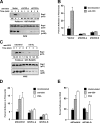
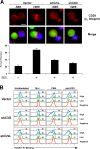
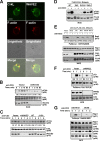


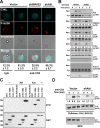
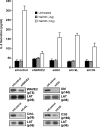
Similar articles
-
WAVE2 regulates high-affinity integrin binding by recruiting vinculin and talin to the immunological synapse.Mol Cell Biol. 2007 Sep;27(17):5986-6000. doi: 10.1128/MCB.00136-07. Epub 2007 Jun 25. Mol Cell Biol. 2007. PMID: 17591693 Free PMC article.
-
Interaction of Bcr/Abl with C3G, an exchange factor for the small GTPase Rap1, through the adapter protein Crkl.Biochem Biophys Res Commun. 2005 Aug 12;333(4):1276-83. doi: 10.1016/j.bbrc.2005.06.030. Biochem Biophys Res Commun. 2005. PMID: 15982636
-
Cytotoxic-T-lymphocyte antigen 4 receptor signaling for lymphocyte adhesion is mediated by C3G and Rap1.Mol Cell Biol. 2014 Mar;34(6):978-88. doi: 10.1128/MCB.01024-13. Epub 2014 Jan 6. Mol Cell Biol. 2014. PMID: 24396067 Free PMC article.
-
T-cell receptor signaling to integrins.Immunol Rev. 2007 Aug;218:65-81. doi: 10.1111/j.1600-065X.2007.00527.x. Immunol Rev. 2007. PMID: 17624944 Review.
-
Regulation of T-cell antigen receptor-mediated inside-out signaling by cytosolic adapter proteins and Rap1 effector molecules.Immunol Rev. 2007 Aug;218:82-91. doi: 10.1111/j.1600-065X.2007.00543.x. Immunol Rev. 2007. PMID: 17624945 Review.
Cited by
-
The Rap1-RIAM-talin axis of integrin activation and blood cell function.Blood. 2016 Jul 28;128(4):479-87. doi: 10.1182/blood-2015-12-638700. Epub 2016 May 20. Blood. 2016. PMID: 27207789 Free PMC article. Review.
-
PI3K in T Cell Adhesion and Trafficking.Front Immunol. 2021 Aug 6;12:708908. doi: 10.3389/fimmu.2021.708908. eCollection 2021. Front Immunol. 2021. PMID: 34421914 Free PMC article. Review.
-
The tyrosine phosphatase SHP-1 promotes T cell adhesion by activating the adaptor protein CrkII in the immunological synapse.Sci Signal. 2017 Aug 8;10(491):eaal2880. doi: 10.1126/scisignal.aal2880. Sci Signal. 2017. PMID: 28790195 Free PMC article.
-
Action and Traction: Cytoskeletal Control of Receptor Triggering at the Immunological Synapse.Front Immunol. 2016 Mar 7;7:68. doi: 10.3389/fimmu.2016.00068. eCollection 2016. Front Immunol. 2016. PMID: 27014258 Free PMC article. Review.
-
Inhibitory signaling blocks activating receptor clustering and induces cytoskeletal retraction in natural killer cells.J Cell Biol. 2011 Feb 21;192(4):675-90. doi: 10.1083/jcb.201009135. J Cell Biol. 2011. PMID: 21339333 Free PMC article.
References
-
- Anton van der Merwe, P., S.J. Davis, A.S. Shaw, and M.L. Dustin. 2000. Cytoskeletal polarization and redistribution of cell-surface molecules during T cell antigen recognition. Semin. Immunol. 12:5–21. - PubMed
-
- Arai, A., Y. Nosaka, H. Kohsaka, N. Miyasaka, and O. Miura. 1999. CrkL activates integrin-mediated hematopoietic cell adhesion through the guanine nucleotide exchange factor C3G. Blood. 93:3713–3722. - PubMed
-
- Billadeau, D.D., J.C. Nolz, and T.S. Gomez. 2007. Regulation of T-cell activation by the cytoskeleton. Nat. Rev. Immunol. 7:131–143. - PubMed
-
- Bos, J.L. 2005. Linking Rap to cell adhesion. Curr. Opin. Cell Biol. 17:123–128. - PubMed
-
- Cannon, J.L., C.M. Labno, G. Bosco, A. Seth, M.H. McGavin, K.A. Siminovitch, M.K. Rosen, and J.K. Burkhardt. 2001. Wasp recruitment to the T cell:APC contact site occurs independently of Cdc42 activation. Immunity. 15:249–259. - PubMed
Publication types
MeSH terms
Substances
Grants and funding
LinkOut - more resources
Full Text Sources
Other Literature Sources
Molecular Biology Databases
Miscellaneous

